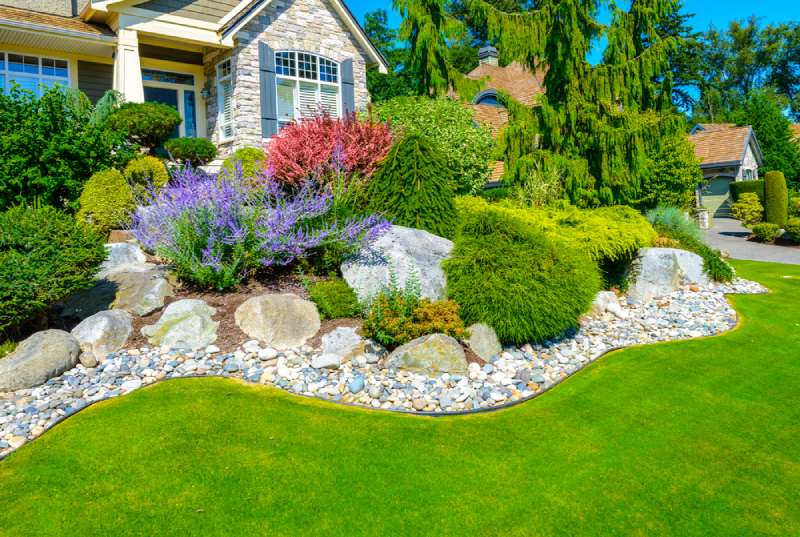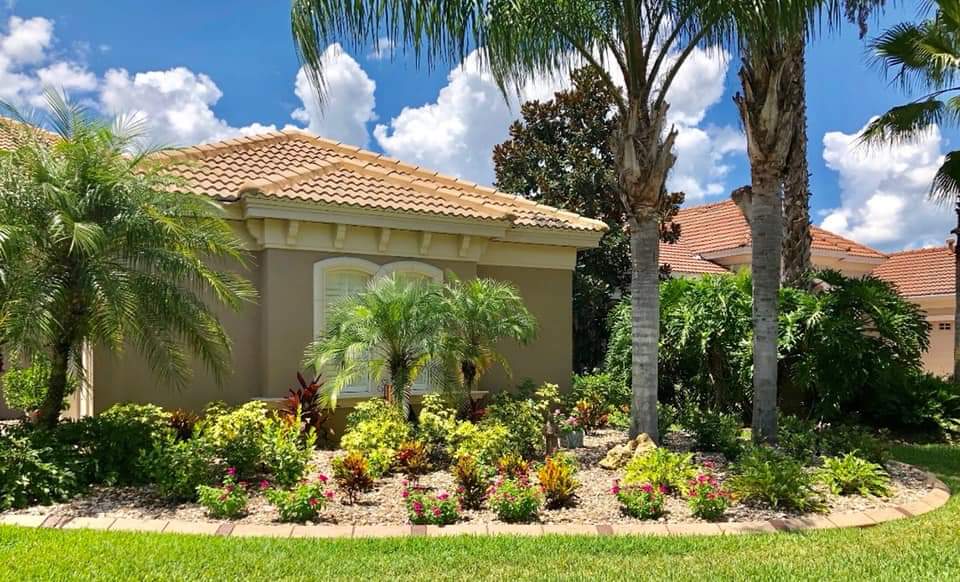Why Choosing the Right Palm Desert Landscaping Service Matters
A Comprehensive Overview to Designing and Implementing Effective Landscaping Solutions
The art and science of landscape design expand past plain looks; they include a thoughtful assimilation of layout concepts, environmental stewardship, and functional execution. An extensive overview to effective landscape design remedies begins with a thorough understanding of your outside area, highlighting the significance of unity, percentage, and balance. As we check out sustainable strategies and the choice of proper plants, the ramifications for biodiversity and neighborhood health come to be significantly noticeable. What methods can one use to make certain these landscapes not just thrive but also thrive attuned to their surroundings?

Recognizing Landscape Layout Principles
One could question what fundamental elements add to reliable landscape design. At its core, successful landscape style pivots on numerous essential principles that guide the plan and option of components within an area. These concepts consist of unity, equilibrium, percentage, and rhythm, each serving to develop an unified outdoor atmosphere.
Unity refers to the natural relationship amongst different elements, making certain that they interact cosmetically and functionally. Equilibrium can be accomplished with symmetrical or asymmetrical plans, allowing the landscape to really feel secure and inviting. Percentage entails understanding the range of aspects in regard to each various other and the surrounding atmosphere, promoting visual consistency and convenience.

Analyzing Your Outdoor Space
Prior to applying the concepts of landscape layout, a detailed evaluation of your exterior space is vital. This initial analysis helps specify the scope of your landscape design task and guarantees that your style lines up with the distinct features of your home. Begin by assessing the dimensions of your space, taking exact measurements to comprehend the offered location for numerous aspects such as outdoor patios, pathways, and gardens.
Next, observe the existing features of your landscape, including topography, soil quality, and drainage patterns. These factors considerably influence plant selection and placement. Additionally, assess the sunshine direct exposure throughout different areas throughout the day, as this will impact the kinds of plants that thrive in your yard.
Take into consideration the microclimates developed by frameworks, trees, and other obstacles, as they can affect temperature and moisture degrees. Take note of any type of existing plants or hardscape components that you want to maintain or remove. This detailed assessment lays the groundwork for a educated and efficient landscaping solution, ensuring that your style is not only cosmetically pleasing however also useful and sustainable for many years to come.
Lasting Landscaping Methods
Incorporating lasting landscaping methods is important for developing an environmentally liable outdoor space. These practices not just promote environmental equilibrium however additionally enhance the visual and useful value of a landscape. One foundational review strategy is the usage of indigenous plants, which call for less water and upkeep while sustaining local wild animals. Implementing effective watering systems, such as drip watering, reduces water waste and makes certain that plants receive sufficient dampness.

An additional effective method is the critical placement of trees and bushes to supply all-natural windbreaks and shade, hence lowering power prices (Palm Desert Landscaping). Rain gardens can be incorporated right into the landscape design to handle stormwater drainage effectively, filtering contaminants prior to they enter waterways
Selecting the Right Plant Kingdoms
Picking the right plants for your landscape is essential to accomplishing both aesthetic allure and ecological harmony. The process begins with an understanding of your neighborhood environment, soil conditions, and the certain microenvironments within your landscape. Evaluating aspects such as sunshine direct exposure, moisture levels, and existing flora will assist you pick plants that grow in your unique setting.
Consider integrating indigenous plants, as they are well-adapted to neighborhood problems, require much less maintenance, and support local wildlife. Furthermore, picking a varied selection of species can improve biodiversity while lowering the threat of disease and pest break outs. It is necessary to examine the growth routines, flowering periods, and seasonal colors of prospective plants to develop a natural and vibrant landscape.
Moreover, consider the planned usage of the area; for circumstances, if the area will experience page high foot traffic, choose resilient ground covers. By attentively picking plants that straighten with both your visual goals and environmental demands, you can produce a sustainable landscape that not only enhances your home yet likewise adds favorably to the bordering community.

Implementation and Maintenance Methods
As soon as the best plants have actually been picked for your landscape, the focus shifts to efficient execution and ongoing maintenance methods. Effective installment begins with proper site prep work, which consists of dirt testing to identify nutrient levels and pH, complied with by modifying the dirt as required. Thoroughly set up plants according to their development behaviors and light needs, ensuring sufficient spacing to promote healthy growth.
Irrigation is an important component of execution. Develop a watering schedule that considers the particular requirements of each plant types, changing for seasonal modifications. Making use of drip watering systems can boost water performance and lower drainage.
Upkeep approaches must be implemented to guarantee the longevity and vitality of your landscape. Regular jobs consist of weeding, mulching, and pruning to control growth and prevent illness. Fertilizing must be carried out based on soil tests, offering the required nutrients without over-fertilizing.
Monitoring for pests and diseases is crucial; early discovery can protect against substantial damages. Lastly, seasonal changes to upkeep routines, such as winterizing perennials and preparing for spring development, will make sure that your landscape stays aesthetically appealing and healthy and balanced year-round.
Verdict
Successful application and ongoing upkeep better guarantee the longevity and vitality of landscapes. By incorporating these components, landscapes can be transformed into stunning, useful environments that advertise biodiversity visit this page and add positively to area health.
One might wonder what fundamental components add to effective landscape style. At its core, successful landscape style pivots on numerous key principles that assist the setup and option of elements within an area.Choosing the right plants for your landscape is essential to accomplishing both aesthetic appeal and ecological harmony. It is necessary to review the growth behaviors, blooming durations, and seasonal colors of potential plants to create a dynamic and natural landscape.
Once the best plants have been selected for your landscape, the emphasis moves to efficient application and continuous maintenance strategies.